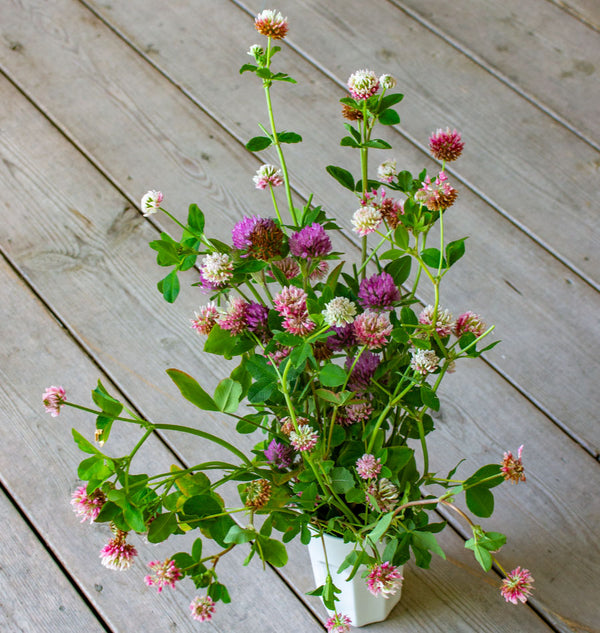Support Food Banks Canada with every dollar spent — 15% sales donated from Black Friday to Cyber Monday.
Time remaining:
Time remaining:

This is a blend of four certified organic clover varieties Ladino, Medium Red, Alsike, and Crimson, with Annual Ryegrass included as a nurse crop that will protect the seeds and soil until the clovers emerge. Continue reading below for tips on how to grow Bees in Clover.
Continue ReadingUrban Bee Supplies is joining the West Coast Seeds family and we couldn't ask for a better match! The world of bees & seeds is closely related, and we are all excited about taking part in this new adventure. West...
Continue ReadingWith pollinator conservation in mind it’s a good idea to plant flower seeds for bees. But which are the best pollinator plants? Which bee flowers are the easiest to sow and grow? What flowers can be grown in containers or...
Continue ReadingThe much maligned dandelion actually has a lot to offer. It has been vilified in our culture as the invader of lawn spaces, thrusting its dazzling yellow colour into an otherwise tranquil field of green. Homeowners pour millions of gallons...
Continue ReadingDifferent bees and pollinators benefit from specific types of flowers. Whether a flower is deep or shallow, red or yellow, generous with nectar or stingy... These all impact the attractiveness to different pollinators. We have collected some of the Best...
Continue ReadingUnderstanding the relationships between specific types of flowers and specific pollinators helps to explain why biodiversity is so important. The greater variety of flowers (including vegetables and herbs) in the garden, the wider range of pollinators can be supported.
Continue ReadingWe like to make distinctions that do not exist in the natural world. Bees are descended from wasps and are so closely related we should think of them as wasps with good PR. So, the next time someone says bees are good and wasps are bad please correct them.
Continue ReadingThis blend of annual and perennial wildflowers is selected to attract and feed a wide array of bumble bees. The Bumble Bee Blend Wildflowers are hardy to Zone 4, and are best grown in full sun. Different components of the...
Continue ReadingThe Biodiversity Blend provides the widest, most diverse combination of flower types in any of our wildflower blends. There are flowers to tempt every sort of pollinator, but particularly butterflies, wild bees, and hummingbirds. Several species are included that produce...
Continue ReadingSave The Rusty-Patched Bumble Bee West Coast Seeds recently launched the hashtag #savetherustypatchbumblebee across our social media platforms including Facebook, Twitter and Instagram. We have been encouraging our followers to re-share our post and tag a friend in an effort...
Continue ReadingLearn about keeping orchard mason bees. In late winter, hang your mason bee nest against a wall in a sunny location that has morning light. Placing it about eye level is best. That way you can watch them coming and...
Continue ReadingCatnip (Nepeta cataria) This perennial member of the mint family is native from eastern Europe eastward to China. It is a bushy, branching herb that grows to 50–100cm (20–39″) tall. Like many mints, its stems are square in cross section,...
Continue ReadingIn our 2015 Growing Guide is Brian Campbell on Pollination and Bee Diversity: Lack of pollination is an unfortunate trend in the plant world. In the late 1960s, the first global review of pollination deficit was conducted. At the time,...
Continue ReadingPlanting a Bumblebee Garden by Brian Campbell Why garden for Bumble Bees? Bumblebees are a keystone species. This means much of our ecological system hinges on the survival of bumblebees. Not just native plants rely on these furry pollinators, but...
Continue Reading